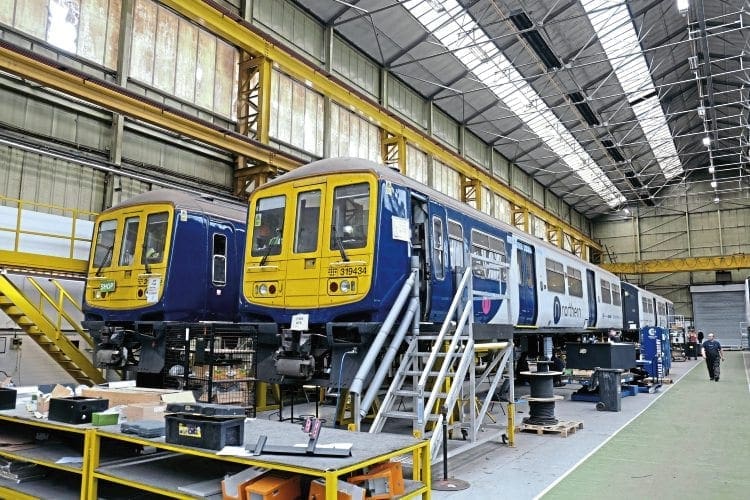With so many new trains being delivered and electrification schemes shelved, Porterbrook and Brush Traction are using their engineering expertise to convert surplus Thameslink commuter trains into ‘go-anywhere’ bi-mode trains. Ben Jones visits Loughborough to see how the project is progressing.
When you’ve invested millions of pounds in maintaining and updating trains to bring them up to modern standards, what do you do when those trains become surplus to requirements soon afterwards?
That was the problem facing Derby-based train leasing company Porterbrook a few years ago when several large fleets of electric trains were rendered redundant by massive new train orders.
In the case of Thameslink, 86 four-car Class 319 dual-voltage EMUs built between 1987 and 1990 have been replaced by new Siemens Class 700s over the last three years.
Enjoy more Railway reading in the monthly magazine.
Click here to subscribe & save.
Most 319s have recently been refurbished and fitted with controlled emission toilets, passenger information systems and PRM-TSI compliant accessible toilets to keep them in service beyond December 2019.

Originally, much of the fleet was expected to switch to GWR’s Thames Valley commuter operation, with others moving to Northern.
The curtailment of Great Western main line electrification and GWR’s decision to buy new Class 387 EMUs for the remaining electric services left more than 60 ‘319s’ without work beyond 2018.
This project started as far back as 2014 when, inspired by the Bombardier/Network Rail Independently Powered Electric Multiple Unit (IPEMU) experiment – which saw batteries fitted to a Class 379 EMU – Porterbrook challenged its engineering team to create their own IPEMU concept, using Class 319s.
At that time, the Government was still committed to a rolling programme of electrification, but many routes were still unlikely to be wired – even in the longer term.
Only 42% of the British rail network is electrified, compared to anywhere between 50% and virtually 100% in mainland Europe. Spotting an opportunity for a flexible train that could take advantage of the gradually increasing electrified network and operate under its own power elsewhere, Porterbrook started to investigate the options for trains that could easily, and reliably, switch between an external power supply and an on-board energy source.
Helen Simpson, innovation and development manager for Porterbrook, was there at the beginning.
She says: “We looked at diesel engines, batteries, supercapacitors (electrical storage devices capable of providing a short-term
boost of energy), hydrogen and flywheels, but only diesel offered the high-energy density, good range and proven capabilities we were looking for.
“We selected Brush Traction in Loughborough as our development partner. Porterbrook funded the feasibility study, while Brush shared the risks with us by helping to fund design work.”
Read more and view more images in the August issue of The RM – on sale now!




